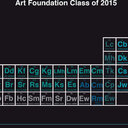Effect of antibacterial dental adhesive on multispecies biofilms formation.
Palabras clave
Abstracto
Antibacterial adhesives have favorable prospects to inhibit biofilms and secondary caries. The objectives of this study were to investigate the antibacterial effect of dental adhesives containing dimethylaminododecyl methacrylate (DMADDM) on different bacteria in controlled multispecies biofilms and its regulating effect on development of biofilm for the first time. Antibacterial material was synthesized, and Streptococcus mutans, Streptococcus gordonii, and Streptococcus sanguinis were chosen to form multispecies biofilms. Lactic acid assay and pH measurement were conducted to study the acid production of controlled multispecies biofilms. Anthrone method and exopolysaccharide (EPS):bacteria volume ratio measured by confocal laser scanning microscopy were performed to determine the EPS production of biofilms. The colony-forming unit counts, scanning electron microscope imaging, and dead:live volume ratio decided by confocal laser scanning microscopy were used to study the biomass change of controlled multispecies biofilms. The TaqMan real-time polymerase chain reaction and fluorescent in situ hybridization imaging were used to study the proportion change in multispecies biofilms of different groups. The results showed that DMADDM-containing adhesive groups slowed the pH drop and decreased the lactic acid production noticeably, especially lactic acid production in the 5% DMADDM group, which decreased 10- to 30-fold compared with control group (P < 0.05). EPS was reduced significantly in 5% DMADDM group (P < 0.05). The DMADDM groups reduced the colony-forming unit counts significantly (P < 0.05) and had higher dead:live volume ratio in biofilms compared with control group (P < 0.05). The proportion of S. mutans decreased steadily in DMADDM-containing groups and continually increased in control group, and the biofilm had a more healthy development tendency after the regulation of DMADDM. In conclusion, the adhesives containing DMADDM had remarkable antimicrobial properties to serve as "bioactive" adhesive materials and revealed its potential value for antibiofilm and anticaries clinical applications.



